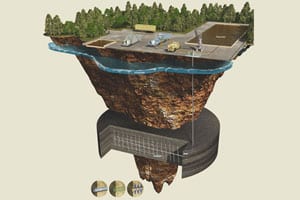
A recently released drilling review found water damage and questionable testing methods in many cases when oil and gas activity were involved. State environmental regulators found, according to a Times-Tribune/The Sunday Times report, that between 2008 – 2012, oil and gas development activity harmed water supplies for some 161 Pennsylvania homes, farms, churches, and businesses […]
 A recently released drilling review found water damage and questionable testing methods in many cases when oil and gas activity were involved.
A recently released drilling review found water damage and questionable testing methods in many cases when oil and gas activity were involved.
State environmental regulators found, according to a Times-Tribune/The Sunday Times report, that between 2008 – 2012, oil and gas development activity harmed water supplies for some 161 Pennsylvania homes, farms, churches, and businesses based on nearly 1,000 determination letters and enforcement orders written by Department of Environmental Protection (DEP) officials and obtained by the media outlet. Determination letters are sent to water supply owners who seek state inspections into whether or not oil and gas drilling activities polluted their well water or impacted the water flow to their wells, according to the Times-Tribune.
Although inspectors say that 77 percent of the 969 records are unfounded, blaming so-called “legacy” pollution, natural events, or mining, one out of six investigations in the five years found that oil and gas activity impacted water supplies either temporarily or to the point where companies had to replace the “spoiled source,” said the Times-Tribune.
Pennsylvania sits atop a piece of the massive Marcellus shale formation—as does New York. The Marcellus Shale is thought to contain billions of dollars in natural gas reserves. As gas drilling has expanded and thousands of wells have been opened in just the last few years, residents from New York, Pennsylvania, Ohio, Maryland, West Virginia, and New Jersey have raised concerns over the safety of drilling. While some believe drilling is an answer to a down-turned economy and energy dependence, more believe drilling is putting the fresh water supplies for millions of people at risk, with the risk greatest for those living closest to the drilling boom.
Because Pennsylvania does not track water supply disruption, the letters now provide confirmation of water contamination or loss due to drilling; the orders mandating firms to correct the damage also give what is considered the best official count of how the drilling industry is affecting Pennsylvania water supplies, according to the Times-Tribune. But, the figures can be difficult to navigate. For instance, noted the Times Tribune, a case of gas infiltrating Dimock Township’s drinking water was considered one incident by DEP despite that Pennsylvania determined that the impact was to 19 families and 18 wells. Also, prior to 2011, resolutions reached between homeowners and drillers were not reportable and data are not accessible today because they are part of protected investigations.
State Auditor General Eugene A. DePasquale announced earlier this year that his office is conducting a performance audit of the DEP’s water testing program to “determine the adequacy and effectiveness of DEP’s monitoring of water quality as potentially impacted by shale gas development activities” for 2009 – 2012, said the Times-Tribune. Broadly, it water supply owners believe that if something is amiss with their water, gas drilling operations are the likely culprit.
Of note, Anthony Ingraffea, Ph.D., an engineering professor at Cornell University told the Times-Tribune that when DEP says it cannot locate a water well contamination-gas activity link, that does not confirm that no link exists. “If DEP sent me a letter that said, ‘We can find no connection,’ my natural question as a scientist would be, ‘How did you look?'” Ingraffea told the Times-Tribune that he was especially concerned by DEP’s counting cases, not individual water supplies, which he noted “makes their statistics look better.”
Hydraulic fracturing (fracking drilling) for gas, for example involves injecting tons of silica sand, a massive mix of more than 600 chemicals, and water underground via a drill into a concrete well that extends to an underground bed of shale rock. When this combination reaches the rock, it is blasted apart and natural gas is released and supposed to be returned to the surface and captured. Critics have long argued that this drilling devastates the environment and contaminates groundwater, underground water aquifers, and nearby and widespread fresh water supplies. Either through the fault of shoddy wells, poorly trained well workers, or through a questionable drilling process altogether, natural gas and the contents of the drilling fluid may be released underground through cracks in the wells or the fractures created by the drilling. This, many area residents closest to wells believe, has led to a contamination of water supplies, in some cases rendering water completely contaminated.


